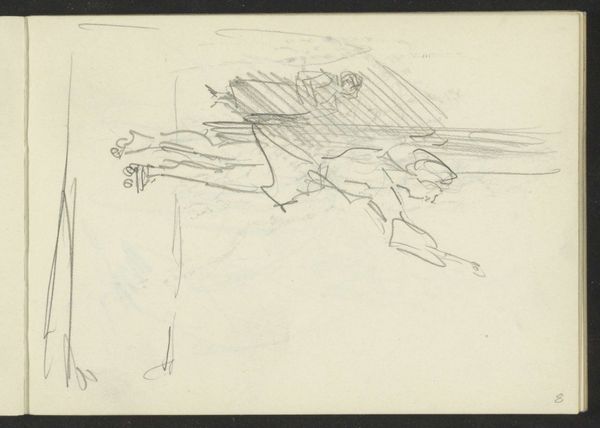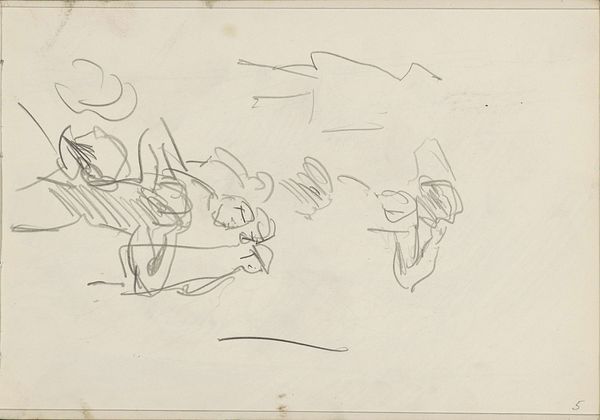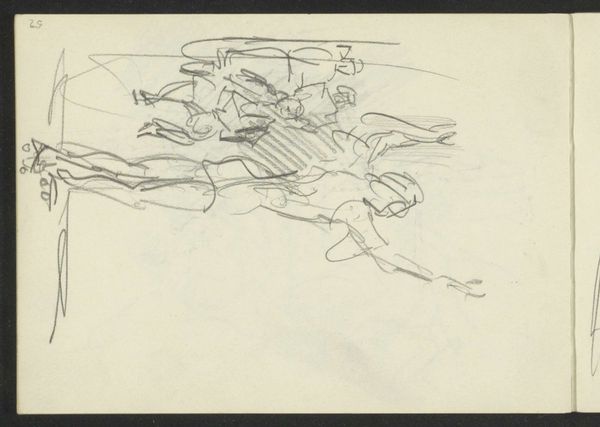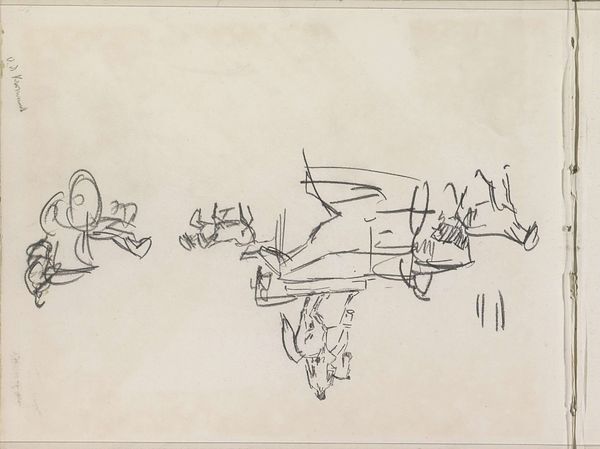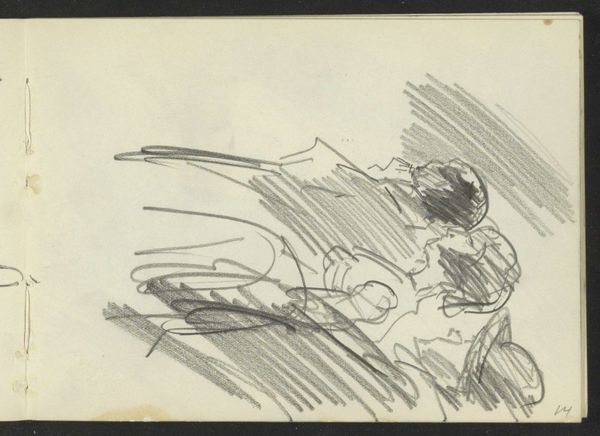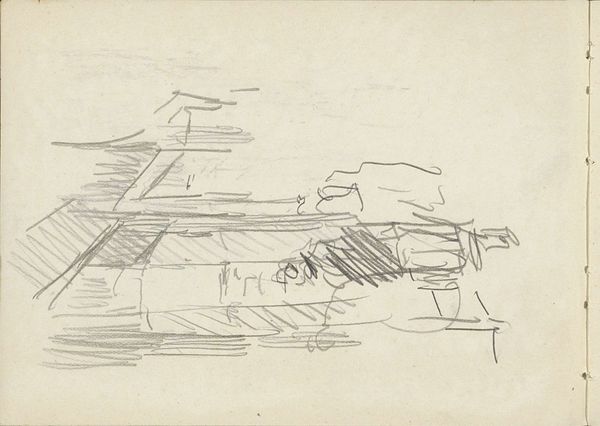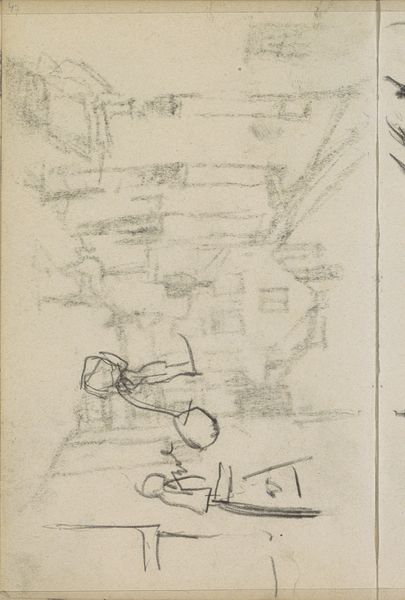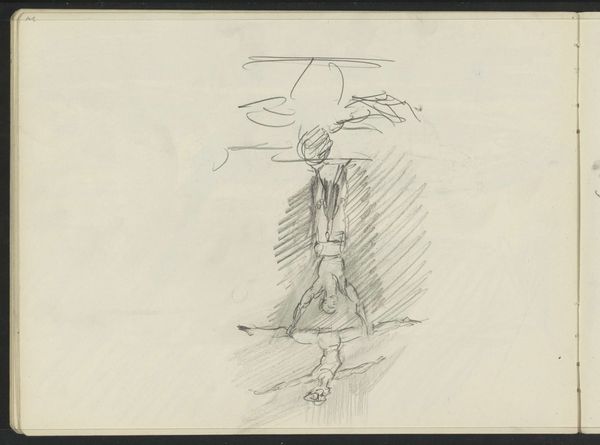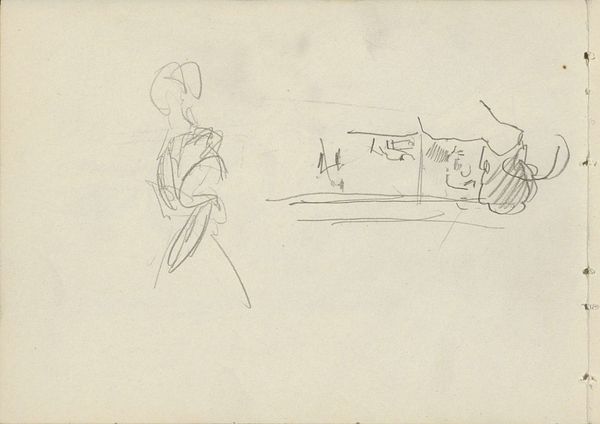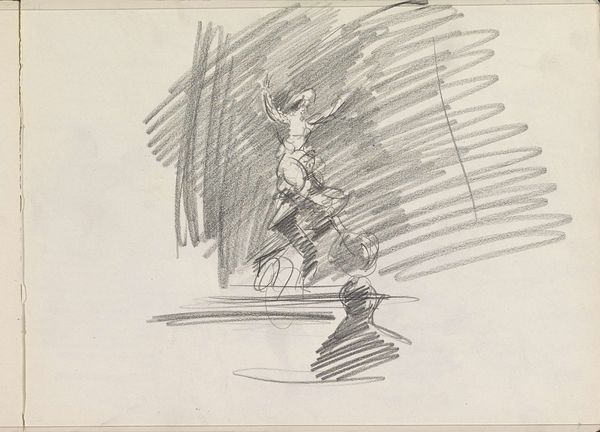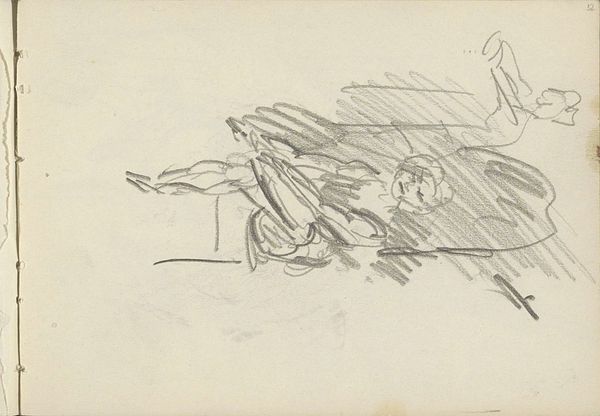
Copyright: Rijks Museum: Open Domain
Editor: Here we have "Cycling Acrobats on Stage," a pencil drawing by Isaac Israels, dating from sometime between 1875 and 1934. The energy of the performers is really palpable, even in just a sketch. What stands out to you about the composition? Curator: The linear quality is quite striking. Note how Israels employed the swift strokes to capture the motion inherent within the acrobatic act. The starkness of the pencil, without any tonal complexities, enhances the sense of immediacy and provisionality. Editor: Provisionality? Curator: Indeed. It is through this lack of finish that Israels amplifies the dynamism. The visible framework – the raw lines themselves – contribute to an understanding of the depicted subject: fleeting performance. Editor: So, the drawing’s unfinished state actually helps convey the feeling of movement? Curator: Precisely. The tension between representation and abstraction here reveals how the structure of the artwork itself embodies the qualities it seeks to portray. Notice also the lines representing the ground. Are they static? Editor: No, they seem to angle upwards, giving the sense that we're looking up at the performers. Almost like a raked stage. Curator: The structural choices animate the space and further contributes to the illusion of spectacle. Would you agree that without these stylistic and formal elements, the piece may fail in the aim of representing that exact concept? Editor: I think so. By focusing on the raw marks and their arrangement, you see how perfectly form and content align in this drawing. I never would have seen that at first glance. Curator: Understanding how visual elements intersect and amplify themes deepens the viewer’s reading of the work and how it all aligns together.
Comments
No comments
Be the first to comment and join the conversation on the ultimate creative platform.
